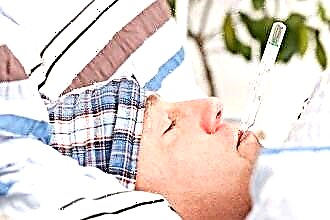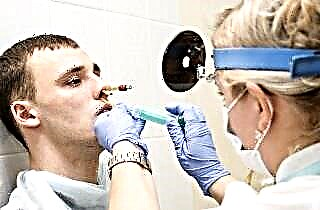The provision of resuscitation measures cannot be imagined without cardiac defibrillation. The technique is effective in life-threatening conditions such as ventricular fibrillation and pulseless tachycardia. With the help of an electrical discharge produced by the apparatus, erratic ineffective activity is stopped, and the correct heart rhythm is restored. In combination with a timely commenced cardiopulmonary resuscitation, the procedure significantly increases the victim's chance of a favorable outcome.
Defibrillation principle: how rhythm is restored
Defibrillation is a critical step in cardiopulmonary resuscitation. The principle of action is based on stopping rapid, ineffective contractions of the heart chambers by creating an electrical discharge.
The restoration of the rhythm is carried out with the help of a high-energy (200-360 J) electrical impulse, which passes through the human body in 0.01 s and breaks the "vicious circle".
Defibrillation technical steps:
1. An electric current is passed between two electrodes, which are superimposed in the region of the base and apex. The direction of the impulse corresponds to the normal passage of excitation along the conductive system of the organ.
2. The simultaneous energy flow stops the spontaneous contraction of individual fibers and "synchronizes" the cardiomyocytes.
3. After a short pause, the normal heart rate is restored, which is set by the sinus node ("driver").
If the first procedure is ineffective, it is allowed to repeat defibrillation with greater intensity after 2 minutes (after assessing the condition and chest compressions). The number of pulses is not limited.
Ventricular fibrillation is a pathological condition that occurs when muscle tissue begins to contract chaotically and very quickly, up to 250-480 beats per minute. The ventricle in such a rhythm is not able to adequately fill with blood and transmit it to the body. Without a timely termination of this process, the prognosis for survival is unfavorable.
Types of devices and their structure
 A defibrillator is a medical device that generates powerful, high-voltage electrical impulses. Modern devices differ little from their predecessors, consisting of a capacitor, a charging and a discharge circuit with a pulse shaping circuit - a biphasic current. The new models have an integrated electrocardiograph to assess the success of manipulations.
A defibrillator is a medical device that generates powerful, high-voltage electrical impulses. Modern devices differ little from their predecessors, consisting of a capacitor, a charging and a discharge circuit with a pulse shaping circuit - a biphasic current. The new models have an integrated electrocardiograph to assess the success of manipulations.
Today there are such types of devices (examples are shown in the photo):
Manual external defibrillator
Such a device requires professional skills. It is used in conjunction with a cardiograph, which, depending on the type of device, can be built-in or separate. The healthcare professional determines the heart rate and the required shock.
Manual internal defibrillator
It is used in the operating room directly on the open heart. Has special "spoons" for the application of the discharge.
Automatic external defibrillator (AED)
Designed specifically for inexperienced users or non-medical personnel (police, firefighters, airport workers, train stations, stadiums and other public areas). The device automatically detects the heart rate and chooses when defibrillation is required and when not.
The use of AED before the arrival of specialized care significantly increases the victim's chances of survival. However, it does not replace the use of manual cardiopulmonary resuscitation (no artificial respiration).
Implantable cardioverter defibrillator
This device is similar to a pacemaker (artificial pacemaker), some modern models can function as a pacemaker. The implant constantly monitors the patient's heartbeat and automatically delivers a small electrical shock (this process is called cardioversion) if it detects a life-threatening arrhythmia. This does not bring discomfort and significantly prolongs life.

Portable cardioverter defibrillator
The patient wears a cardioverter on a special harness. The device is necessary for those who are at the stage of preoperative preparation for implantation of a pacemaker. The shocks delivered by the device synchronize cardiac activity.
Indications
- ventricular (ventricular) fibrillation;
- ventricular (ventricular) tachycardia without pulse.
Defibrillation is not indicated if the heart has stopped completely (with asystole and pulseless electrical activity), or when the patient is awake or has a pulse.

Execution technique
The defibrillation resuscitation algorithm approved by the American Heart Association in 2015 is as follows:
- Make sure there is an indication for defibrillation (assessed by ECG).
- Initiate oxygen-assisted cardiopulmonary resuscitation (CPR).
- First rank.
- Continue CPR immediately for five cycles (one cycle consists of 30 chest compressions and 2 breaths). You need to make 100 clicks per minute. Consequently, the CPR break will take exactly 2 minutes). Install an intravenous catheter and endotracheal tube. Begin ventilation of the lungs at a frequency of 10 breaths per minute. Do not check pulse and rhythm before the end of this time.
- Check pulse and heart rate.
- If the rhythm is restored, defibrillation stops, the patient goes under observation.
- If the first blow did not give the desired effect, it is worth repeating the discharge.
- Repeat the rhythm-defibrillation-CPR cycle.
The above steps are performed only by medical personnel.
Nowadays, external automatic defibrillators (ADDs) are in widespread use. They can be found in airports, train stations, shopping centers and other crowded places. They are designed so that each person can save someone's life with the help of audio prompts without prior preparation.
- If you witness how a person has lost consciousness, make sure that he does not respond to external stimuli - speak to him loudly, lightly shake.
- Call emergency services or have someone else do it.
- Check if the victim is breathing and if there is a pulse. If these signs are absent or irregular, start cardiopulmonary resuscitation. Ask someone to prepare a WAD.
- Before using VAD, make sure that you and the victim are on a dry surface, there is no spilled water nearby.
- Switch on the device. He will guide your further actions.
- Remove clothing and underwear from the victim's chest. If it is wet, wipe it off. Apply the sticky electrodes as shown on the screen (above the right nipple and towards the armpit from the left nipple).
- Produce a shock. Do not touch the victim at this moment. The human body conducts electricity, and electrical defibrillation of a healthy heart will disable the resuscitator.
- Perform CPR within 2 minutes. Check your heart rate with VAD. If he recovers, continue CPR.
- If fibrillation persists, repeat the shock.
- Continue the cycle until medical assistance arrives.
Further tactics of assisting the patient after an attempt to restore the rhythm
If defibrillation is successful, the patient requires observation and care. Often, the application of an electrical discharge through the conductive system can cause the development of arrhythmias. Neurological disorders associated with temporary cerebral hypoxia are also possible.
The main goals for further actions:
- diagnosis and treatment of the causes of cardiac arrest;
- minimizing the negative effects on the nervous system.
For this, the following conditions must be met:
- 12-lead ECG;
- encephalography in cases of impaired consciousness (coma) and in patients with epilepsy;
- emergency reperfusion (restoration of blood flow) if the cause of cardiac arrest is myocardial infarction;
- maintaining stable blood pressure, blood glucose levels;
- oxygen supply;
- body temperature control (within 35-36 ˚C);
- consultation with a neurologist.
Resuscitation actions are terminated:
- with the ineffectiveness of resuscitation measures carried out within 30 minutes;
- upon ascertaining death based on the irreversible cessation of the functioning of the brain.
Conclusions
Nowadays, not only every ambulance is equipped with a defibrillator, but also many public spaces. According to statistics, the prevailing number of sudden cardiac arrest occurs outside of medical institutions.
The sooner an injured person who has lost consciousness receives first aid, the higher his chances of survival and staying healthy. It is possible to bring a patient with ventricular tachycardia or fibrillation back to life if the heart is started with a defibrillator while performing cardiopulmonary resuscitation.
Knowing the principles of CPR and your concern for it can save someone's life.



